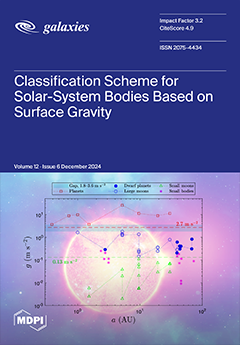Stellar evolution models serve as tools to derive stellar parameters from elemental and isotopic abundance ratios. For low-to-intermediate mass evolved stars, C/O,
12C/
13C, and
17O/
18O ratios are proxies of the initial mass, a largely unknown parameter in
[...] Read more.
Stellar evolution models serve as tools to derive stellar parameters from elemental and isotopic abundance ratios. For low-to-intermediate mass evolved stars, C/O,
12C/
13C, and
17O/
18O ratios are proxies of the initial mass, a largely unknown parameter in post-AGB sources, yet fundamental to establish correlations with the main properties of their post-AGB envelopes, progressing in understanding their formation and evolution. In these sources, the C/O ratio can be constrained from the detection of C- or O-bearing species in addition to CO, while the
17O/
18O ratio is straightforwardly determined from the C
17O-to-C
18O intensity ratio of rotational lines. However, the theory is at odds with the observations. We review the status of the question, including new accurate
17O/
18O ratios for 11 targets (totaling 29). Comparing the results for the
17O/
O ratios and C-rich/O-rich chemical composition, we find that ∼45% of the cases are
canonical, i.e., the observations align with standard model predictions. O-rich
non-canonical sources, with
O/
O ratios above the expected, can be explained by a premature interruption of their AGB evolution as a consequence of a quasi-explosive ejection of a large fraction of the initial mass. For
non-canonical C-rich sources, with
O/
O ratios below predictions, we suggest the possibility they are extrinsic C-rich stars.
Full article





